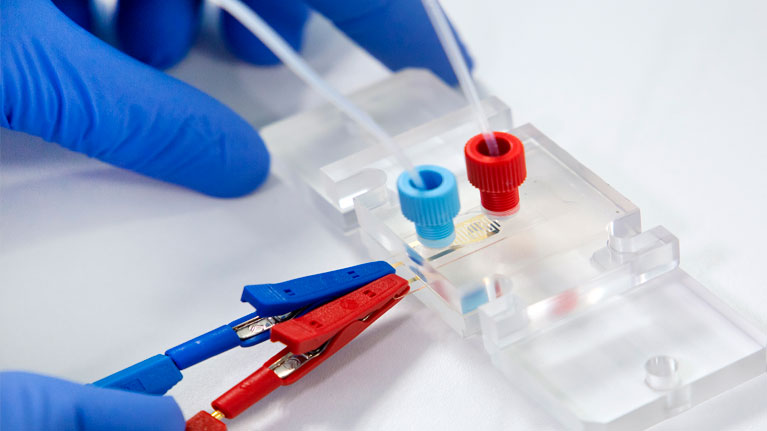A new genetic kit for the rapid and safe detection of SARS-CoV-2
The Tekniker and Gaiker technology centres are cooperating to design an ultrasensitive and rapid kit as an alternative to PCR testing to detect SARS-CoV-2 that causes the COVID-19 disease. This system will allow the test be performed in less time and no specialized laboratory facilities will be required.

The PCR technique is Spain’s most widely used diagnostic tool for the detection of the SARS-CoV-2 virus. This technique, the only one of its kind whose diagnostic reliability has been fully certified, requires sophisticated laboratory equipment and the support of specialised staff to carry out the entire virus detection process: from the moment genetic material is extracted until amplified genetic fragments are read optically. Moreover, between four and six hours are required to carry out the test in full and to obtain diagnostic results.
In order to minimise the complexity of this diagnostic test, two Basque technology centres, Tekniker and Gaiker, members of the Basque Research and Technology Alliance (BRTA), are currently working together to design an ultrasensitive genetic kit that, compared to PCR testing, is quicker, more economical and does not required specialised laboratory equipment.
This kit, currently in the development stage, introduces an alternative isothermal amplification system known as LAMP (LoopAMPlification), whose main feature is that the reaction itself takes place at a constant temperature. Additionally, and as neither a thermocycler nor highly qualified staff are required, this significantly facilitates viral diagnoses at different health care facilities and decentralises analyses performed at hospitals. As the kit also features electrochemical detection technology, very high detection sensitivities can be achieved. Consequently, it is very easy to integrate the device.
In this regard, and thanks to the development of this kit, it will be possible to use this equipment outside the laboratory setting and closer to where the samples are taken. This means that, compared with the current practice, it will be possible to perform a larger number of tests. The design approach used for this amplification system provides a high level of detection efficiency and that testing time is reduced.
The test is to be evaluated by Osakidetza’s (Basque Health Care System) laboratories to ascertain whether it can be used by different stakeholders in the health system.
A technology to detect the coronavirus
Tekniker, an organisation with a solid track record in terms of integrating electrochemical detection with microfluidic components for diagnostics in the health sector, is currently designing the test’s electrochemical transduction system. On the other hand, Gaiker, the coordinator of this initiative, is focusing on its biochemical features.
Over the last four years, both technology centres have collaborated in different projects looking into how this technology can be applied to the detection of microorganisms. More specifically, three projects, Elkartek, Micro4FAB, µ4F and μ4indust, coordinated by Tekniker have provided the frameworks that both centres have used to develop sensors that are able to detect legionella and listeria bacteria, as well the aspergillus fungus.
Thanks to the body of knowledge generated over the last few years with regard to the detection of different pathogens by means of LAMP isothermal amplification and electrochemical transduction, work can now focus on detecting the SARS-CoV-2 virus in less than an hour.
